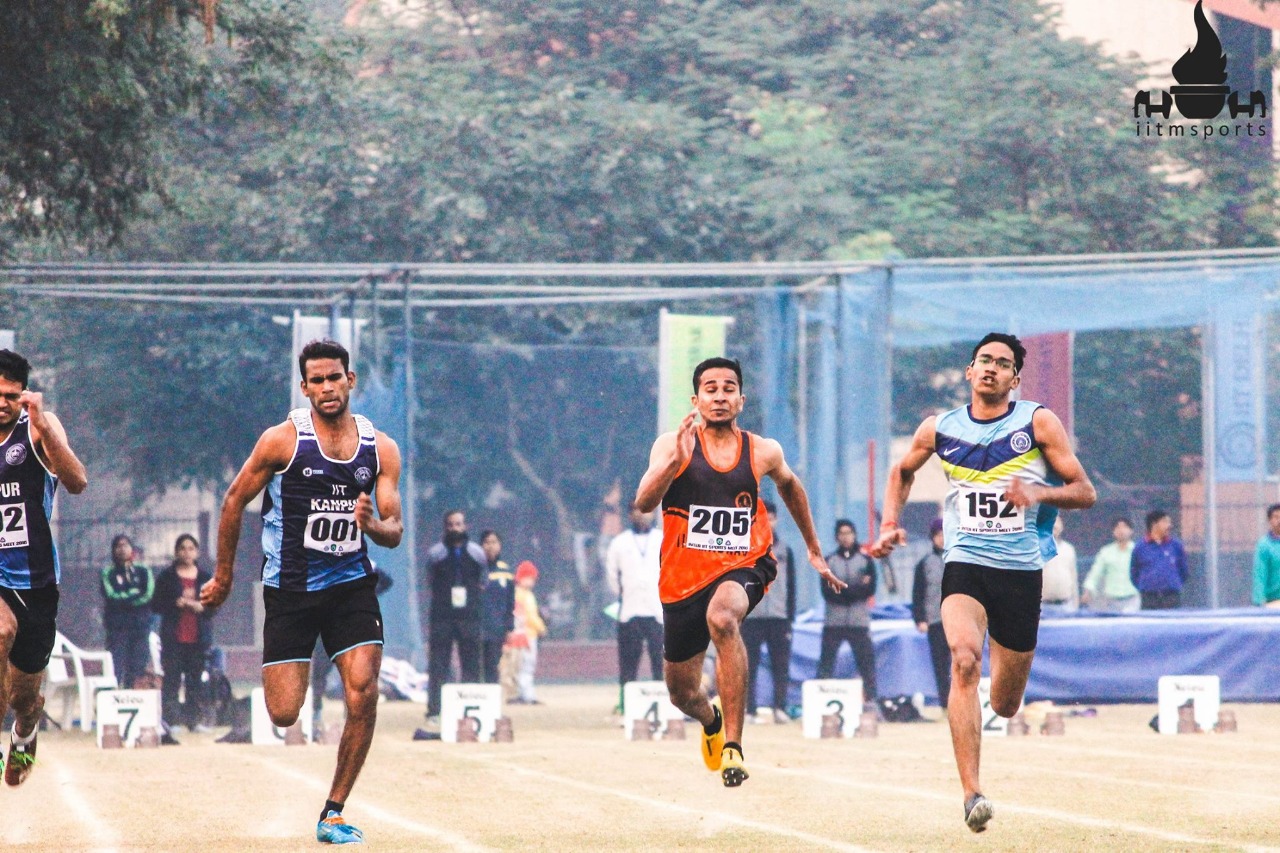Design by Shreethigha G.
Edited by Mahima Raut
This year, IITM bagged the grand title of NIRF #1 for the second time in a row, to nobody’s surprise (and to everybody’s meme content). If insti were a person, she would be proudly strutting about under the weight of two “overall #1” and five “engineering #1” sashes.
Insti is, of course, special to all of us, but it’s truly unique out of all the IITs, too. Where else could you find an exclusively student-use lab like CFI where literally any student can walk in with an idea and walk out with a product? Or a dedicated 11-acre hub for industry-academia collaboration like the IITM Research Park, the first of its kind in the country? Or such a strong entrepreneurial ecosystem with over 200 successfully incubated start-ups, and more in the making? Or an even stronger ecosystem of thieving monkeys?
Apart from these impressive features peculiar to insti, we’ve also been consciously working towards the quantifiable aspects that are covered by NIRF, such as experienced faculty, quality, and quantity of research publications, resources and infrastructure, and regional, gender, and socio-economic diversity. And we haven’t become stagnant after being in the first place either – our score has been improving steadily, too. Currently, we’re also leading innovation amidst COVID-19. We’re totally on a roll. But have we reached the peak? Or do we have farther to go?
This year, seven of the older IITs, including IITM, announced that they will not be participating in the Times Higher Education (THE) World University Rankings, which is the most popular global ranking alongside the QS rankings. The IITs stated the reason as ‘a lack of transparency’, and with good reason.
After consistently being placed among the first 200-300 ranks globally in the QS rankings, last year’s THE rating put most of these leading IITs in the 400-500 range, with IITM even going down into the 600-800 range. Understandably, this has caused some concerns about the methodology behind the ranking.
The two ranking organizations have made public some very basic information about what parameters they take into account for judging a university. The common ones include academic reputation, faculty/student ratio, research citations, and so on. Comparing and analysing all of them, there seem to be three major factors where our Indian institutions, as a whole, could possibly be losing out in the global race.
- Academic reputation
- Research funding
- International students & faculty
Academic reputation
Glaringly, the least objective of these parameters is the academic reputation, which is given almost 40% weightage in both the rankings. This is a measure based on global surveys asking experienced scholars to list which institutions they believe are the best (in teaching and research) in their field. The survey claims to be well-represented and normalised according to region/country, but the problem remains that most scholars, irrespective of their country, would vote for the more well-known and older universities of the US and Europe. Ask any reputed scholar from anywhere in the world if they’ve heard of Harvard and they will almost definitely say “yes, of course” with a confused frown, wondering if you’re crazy. Whereas if you try asking them about IIT Madras, well… you’re likely to get just the confused frown.
Of course, this is primarily because most of the international top universities have built up their reputation with dozens of Nobel laureates over many decades or even centuries, whereas even the oldest IITs are relatively young. Backing this up is the fact that there are three IITs in just the top 70 in the ‘golden age’ world universities ranking – for institutions only 50-80 years old. Reputation may be a reflection of quality, but it seems a bit unfair to place so much value on sheer fame.
Research funding
The second factor where we’re lagging is in research funding. QS gives only 20% weightage to research (measured in the form of citations), but the THE methodology gives a whopping 60% weightage to research, including part of the above-mentioned reputation survey.
Ironically, insti couldn’t be more lauded for its research, but the international reputation survey and research income won’t be doing us a favour when compared to the first world countries. In contrast, in the same year’s ‘Emerging Economies’ university rankings, Indian institutes entered the list at just #16. Clearly, funding plays an important role.
The IITs, especially IITM, are heavily funded for research, yet there’s a ridiculous gap between us and the global top universities. Last year, for example, Harvard got as much as ten times more research funds than IITM. And when I say research funds, I’m not talking about the general endowment for the institute, which majorly contributes to infrastructure (both research and otherwise), and for which the difference between the IITs and, say, MIT is more than $10 billion. Honestly, it’s impressive enough that we’ve come this far.
Fortunately, our research income has been going up as of the past few years and hopefully will keep doing so. This won’t be just for the sake of the educational institutions but the nation as a whole, because investment in impactful research always benefits society many times more.
Western technological institutions do have better research facilities. But we have equally brilliant minds. Something we can do is attract more postgraduate and Ph.D. students because those levels are where research really happens. The recent Young Research Fellow Program is a step in the right direction. With such exposure, more undergraduates may choose to pursue the path of research.
Internationalisation
The last important parameter where India is losing out is international students and faculty. It does have a relatively low weightage – less than 10% – but it’s not too much of a shocker that all Indian universities score miserably low here. It doesn’t help that encouraging international students is always a bit of a dilemma because we never have enough seats for our students. And we can’t afford to pay a lot of foreign faculty either.
To be fair, unlike many countries we have an incredible level of cultural and linguistic diversity within our own country. But the more the merrier, right? In fact, IITM is already working on strategies to attract more overseas scholars. Hopefully, sometime soon, we will be able to see more students and profs from all corners of the world walking around in insti.
But this last case, the question of how many international students and faculty Indian universities can afford to take in, represents the inherent limitation of a worldwide ranking system – it can’t take into account the local social and economical situations where the institution is located. It judges universities based on a set of pre-defined criteria, which may or may not be in line with what the local community needs.
Now you might be thinking, then why fuss so much about the international ranks? If we know we’re good enough, what does it matter what others think of us, right? In fact, there has even been a study by IIT-Delhi concluding that the NIRF ranking methodology is far more objective and inclusive than any of the global ones. The HRD minister has expressed confidence that NIRF will reach a point where international institutions will want to be included in the Indian ranking system rather than vice versa.
But we can either sit about and wait for that to happen, or we can try to improve our standing anyway because it does have its benefits. We can grow and achieve much more with international collaborations, not to mention the career opportunities that open up for our graduates. And for more foreign institutions to be aware of and be interested in us, the world university rankings are a good start to putting ourselves on the map.
We’re on a winning streak with NIRF #1. And that’s great. But why stop there when we can go for world domination?
Sources :
- https://timesofindia.indiatimes.com/home/education/news/why-older-iits-are-boycotting-times-higher-education-rankings-2020/articleshow/75291276.cms
- https://www.topuniversities.com/qs-world-university-rankings/methodology
- https://www.timeshighereducation.com/world-university-rankings/world-university-rankings-2020-methodology




